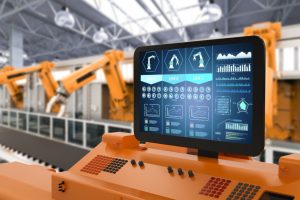Industrial Touch Panel vs Industrial Touch Screen: What’s The Difference?
Touch interfaces have become an integral part of our daily lives, seamlessly blending with a myriad of devices. Two terms that often surface in discussions about touch technology are industrial touch panel and industrial touch screen.
While they might sound interchangeable, they serve distinct roles in the realm of interactive interfaces. Let’s start by dissecting the components of each term.
Understanding Touch Panels and Touch Screens
An industrial touch panel refers to the underlying technology that enables touch input. It’s the invisible layer beneath the display surface that senses touch gestures and translates them into commands.
On the other hand, an industrial touch screen encompasses both the display and the touch panel, providing a unified interface where users can interact directly with the visual elements on the screen.
Industrial Touch Panel and Industrial Touch ScreenTheir Similarities
Despite their differences, industrial touch panels and industrial touch screens share a common goal: facilitating user interaction. Both technologies have evolved to offer multi-touch capabilities, enabling gestures like pinch-to-zoom and swipe, creating a more intuitive and user-friendly experience.
Whether you’re navigating through your smartphone apps or interacting with an ATM, both touch panels and touch screens contribute to the seamless fusion of digital and physical interactions.
Industrial Touch Panel and Industrial Touch ScreenTheir Differences
The primary distinction lies in the layered architecture. A touch panel is a standalone component, often integrated into various devices, from industrial control systems to medical equipment. It acts as a sensory interface, capturing touch input and transmitting it to the device’s processor. In contrast, a touch screen combines the touch panel and display into a single unit, providing a consolidated interactive surface.
Another notable difference is the variety of technologies employed. Resistive, capacitive, infrared, and surface acoustic waves are some of the touch panel technologies, each with its unique advantages and disadvantages. Touch screens, as a broader category, can incorporate any of these touch panel technologies but are not limited to a specific type.
Uses in Diverse Settings
Touch panels find applications in specialized settings where discreet touch interfaces are necessary. Industrial control panels, ticketing machines, and medical devices often rely on touch panels for their durability and precise touch detection. They serve as the silent workhorses behind the scenes, ensuring seamless operation without drawing attention to themselves.
Touch screens, on the other hand, dominate the consumer electronics landscape. Smartphones, tablets, interactive kiosks, and information displays extensively use touch screens to provide an immersive and engaging user experience. The unification of the touch panel and display simplifies the interface, making it more accessible to a broader audience.
Choosing the Right Technology
The choice between touch panels and touch screens boils down to the specific requirements of the application. If discreet touch input is essential, a touch panel might be the preferred choice. For applications where the seamless integration of display and touch functionality is paramount, a touch screen provides an elegant solution.
In the ongoing debate of touch panel versus touch screen, there is no one-size-fits-all answer. The decision depends on the intended application and the user experience goals.
Ultimately, the better choice is the one that aligns with the unique demands of the technology landscape it seeks to enhance.
Looking for an industrial touch panel and touch screen supplier with the best price? Let’s talk.






